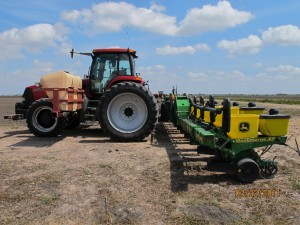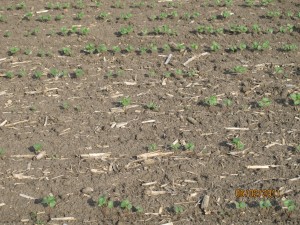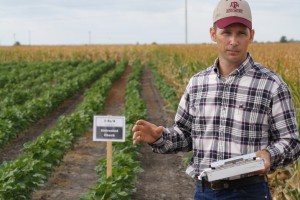Gaylon Morgan, State Extension Cotton Agronomist, gmorgan@ag.tamu.edu:
Along with variety selection, seed quality should be on cotton producers’ minds, especially considering the wet and cool spring in South and East Texas and current cotton prices. Also, one of the most popular thoughts this winter has been to reduce seeding rates in order to cut seed costs. This is a viable option for many. However, reducing seeding rates should only be considered in conjunction with high quality seed and near optimum planting conditions. When reducing the seeding rates, it is critical to have a good emergence, which results from high quality seed, good seed placement, and warm soil temperatures (62-65o F). Several of these factors can be controlled, or partially controlled, and below are some management considerations.
Regarding seed costs, and Plains Cotton Growers (PCG) has a very effective Seed Cost Calculator for the High Plains of Texas. This calculator is very helpful for producers to compare seed costs of varieties and technology fees, but also compare costs of various seeding rates. However, for producers in South, East, and Rolling Plains of Texas, please note that the Technology fees may be different than those listed in the PCG Seed Calculator.
Cotton is a warm-season perennial plant and is more sensitive to cool soil temperatures than grain crops. Before planting cotton, the 4” soil temperature should be taken in the field. The recommended soil temperature (4”) for planting cotton is 65o and more specific information can be found in the publication titled Soil Temperatures for Cotton Planting. Soil temperatures can be obtained from some local weather stations or even regional models, such as the Aghost webpage. However, several factors influence soil temperature, including soil moisture and ground cover or residue, and weather station data should not be a replacement for checking the in-field soil temperature with pocket thermometer. Previous research by D.F. Wanjura demonstrates the soil temperature effect on the time required for emergence and the delayed emergence increases the risk of seedling diseases. See below.
Seed quality is the final management factor to be strongly considered when reducing seeding rates or planting under adverse conditions. There is no doubt that some genetic (variety) differences exists in seedling vigor, but there can also be large difference in seedling vigor within a variety by seedlot. Each bag (or bulk unit) is required by state law to include the percent germination from the Standard Germination Test. However, the Standard Germination Test is conducted under near optimum conditions (68o for 16 hours and 86o for 8 hours) and germination is documented after 7 days. These temperatures are not representative our cotton planting conditions and is not a good indicator of seedling vigor. The best estimate that is currently available for seedling vigor is the Cool-Warm Vigor Index Test. Seed companies conduct the Cool-Warm Vigor Index Test on every seed lot and can make this information available to producers. But, producers will have to inquire with the seed company or distributor to obtain this information. For additional information on cotton seed quality, see the publication titled Cotton Seed Quality – Where It All Begins by Todd Baughman. From a practical perspective, producers should plant seed with a Cool-Warm Vigor Index of 160 or above, especially when planting into cooler soil temperatures or other adverse conditions.
Regarding the seeding rate and “how low can you go”. This is a more difficult question to answer, because it is highly dependent on the geographic region, weather, irrigation capacity, and variety growth habit. Cotton does have a tremendous ability to compensate (increasing bolls/plant) for low stands with little impact on yields, assuming no big skips in the stand. However, there are several exceptions and can result in significant yield losses. The most common problem with lower plant population is the increased likelihood of big skips in the field. So, good seed placement (seeds/foot and planting depth) are essential for planting low populations. In South and East Texas, comparable yields occurred for plant stands between 1.7- 4.6 plants/ft. In West Texas, especially in the northern production regions, cotton plants have less time (heat unit accumulation) to compensate for low plant populations. The current recommendations to obtain the final uniform plant stand between 2-3 plants/ft on dryland and 3-4 plants/ft on irrigated. Some on-going research with modern cotton varieties will be completed in 2015, and should provide additional details on the optimum dryland and irrigated plant populations for West and South Texas.
In preparation for planting.
Cotton stand differences due to seedling vigor.
Gaylon Morgan
State Extension Cotton Agronomist
College Station, TX
gmorgan@ag.tamu.edu



